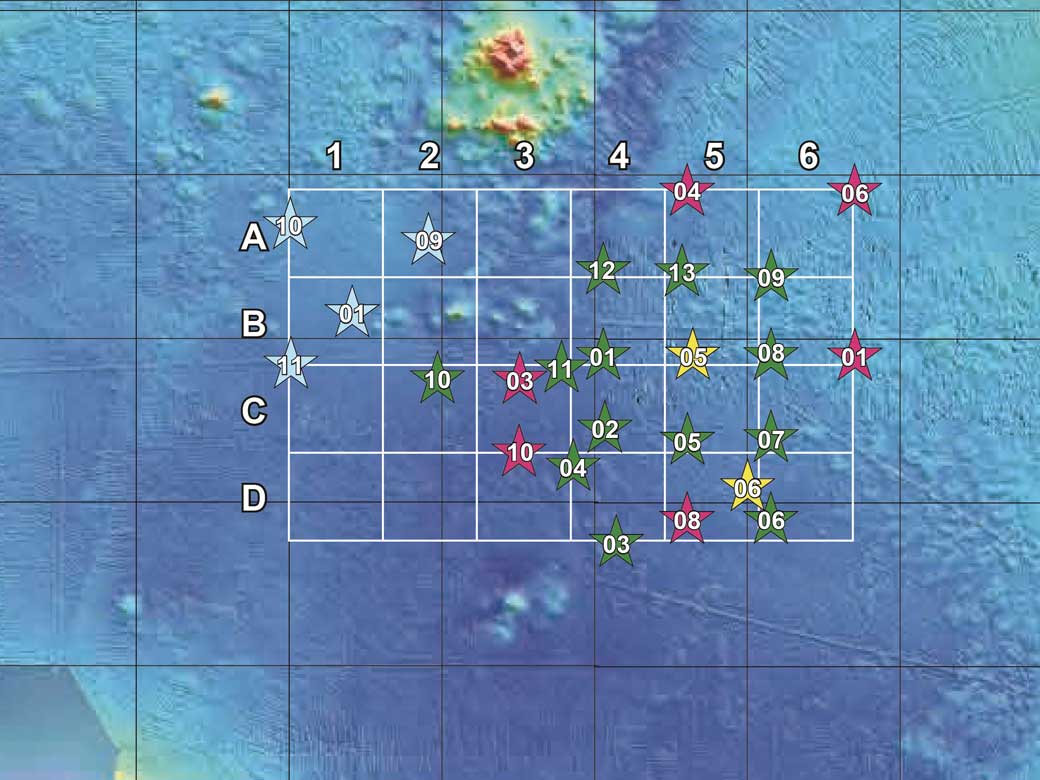Semi-infinite supply of rare-earth elements found in Japan
Fri, Apr 13, 2018-
Tags
Will Japan become globally independent in terms of mineral resource in the future?
Researchers discovered a centuries worth of rare-earth elements within Japan’s economic exclusive zone and succeeded in establishing a mineral processing procedure that selectively recovers host minerals of rare-earth elements from deep-sea mud.

Locality and bathymetric maps of the research area
“Rare-earth elements and yttrium (REY) are critical in renewable energy technologies and electronics, for example, hybrid vehicles, rechargeable batteries, wind turbines, and light-emitting diodes, as well as medical technologies,” explains Yutaro Takaya, associate professor at Waseda University and leading author of this study. “Our findings may change the nation’s policies and strategies on natural resource management, for we could possibly become self-reliant in terms of rare-earth mineral resource and build a sustainable future.”
Its abundance, paucity for radioactive elements, and easy extraction and recovery have made REY-rich mud a promising rare-earth metal resource, and back in 2013, marine sediments high in REY content were found near Minamitorishima, approximately 1,800km southeast of Tokyo. Since then, Japanese industries, academic institutions, and the government have collaborated to investigate development possibilities and evaluate its economic value.
In this particular study, the team used Geographical Information System software to visualize the REY distribution in the seabed and evaluated its resource potential. In the northwestern part of the island, they found that the resource amount was estimated to be 1.2 million tons of rare-earth oxide, yielding to decades of annual global demand for rare-earth elements.
“When examining the overall target area, the resource amount was estimated to be 16 million tons, accounting for rare earths worth hundreds of years, for example, yttrium being 780 years,” Takaya says. “These metals could be supplied on a semi-infinite basis to the world.”
Additionally, a hydrocyclone separator has enabled selective recovery of biogenic calcium phosphate grains, which are rich in REY content, from deep-sea mud by grain-size separation and has significantly improved the ore grade. In fact, the quality of extracted earth deposits using this technology enhanced 20 times in comparison to those found in Chinese territories.
Takaya’s team is now trying to enhance this quality by 50 times, which will ultimately lead to lower operation cost and increased efficiency. He adds that he is excited by the possibilities of new industries being borne and developed out of the exploitation of this new REY resource.
Their study was published online in Scientific Reports on April 10, 2018.
Reference
- Article title: The tremendous potential of deep-sea mud as a source of rare-earth elements
- Published in Scientific Reports on April 10, 2018
- Authors: Yutaro Takaya*1,2,3,4, Kazutaka Yasukawa5,4, Takehiro Kawasaki5, Koichiro Fujinaga4,3, Junichiro Ohta4,3,6, Yoichi Usui7,2, Kentaro Nakamura5, Jun-Ichi Kimura6, Qing Chang6, Morihisa Hamada6, Gjergj Dodbiba5, Tatsuo Nozaki2,3,4,8, Koichi Iijima2, Tomohiro Morisawa9, Takuma Kuwahara10, Yasuyuki Ishida11, Takao Ichimura11, Masaki Kitazume12, Toyohisa Fujita5 & Yasuhiro Kato3,4,2
1) Department of Resources and Environmental Engineering, School of Creative Science and Engineering, Waseda University
2) Research and Development Center for Submarine Resources, Japan Agency for Marine-Earth Science and Technology (JAMSTEC)
3) Frontier Research Center for Energy and Resources, School of Engineering, The University of Tokyo
4) Ocean Resources Research Center for Next Generation, Chiba Institute of Technology
6) Department of Systems innovation, School of Engineering, the University of Tokyo
7) Department of Solid Earth Geochemistry, JAMSTEC
8) Department of Deep Earth Structure and Dynamics Research, JAMSTEC
9) Department of Planetology, Graduate School of Science, Kobe University
10) Engineering Project Center, Toa Corporation
11) Research and Development Center, Toa Corporation
12) Central Research Laboratory, Taiheiyo Cement Corporation
13) Department of Civil and Environmental Engineering, Tokyo Institute of Technology
- DOI: 10.1038/s41598-018-23948-5














